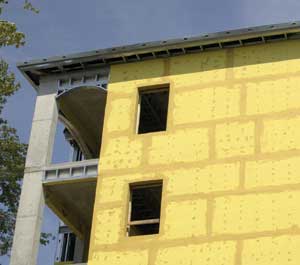Fluid Applied Air/Moisture Barriers for Moisture Control and Mold Prevention in Wall Construction
This course is no longer active
Advertorial course provided by Sto Corp
Learning Objectives:
- Know the components of fluid applied air/moisture barriers
- Compare the advantages of fluid air/moisture barriers with building wraps and other moisture barriers
- Identify design considerations when incorporating fluid applied air/moisture barrier systems into wall assemblies
Credits:
Fluid applied air/moisture barriers
are effective and economical means of controlling moisture
in wall assemblies. Moisture control
assists in preventing mold growth in wall assemblies. Fluid
applied air/moisture barriers also offer performance advantages
over building wraps and traditional asphalt- impregnated felt
or paper moisture barriers. They can be used in all types
of wall construction over wood, gypsum and cement-based sheathings.
They can also be used over prepared concrete and concrete
masonry units. They generally consist of three components
(Figures 1a and 1b on page 204):
- A spray- or trowel-appliedjoint treatment for filling sheathing joints, spotting fasteners, and protection of rough openings, corners and other changes of plane in sheathed wall construction.
- Areinforcing mesh or tape used in conjunction with the joint treatment to reinforce sheathing joints, corners, and changes of plane, and for repair of minor cracks in concrete or concrete masonry wall construction.
- Awaterproof coating applied by spray, roller or brush to prepared sheathing, concrete or concrete masonry wall surfaces.
|
||||||||||||||
When properly applied to sound supporting construction, these components function together as an air barrier and seamless moisture barrier in the wall assembly. Some of the advantages of a fluid applied air/moisture barrier include:
|
Originally published in Architectural Record.
Originally published in October 2005










